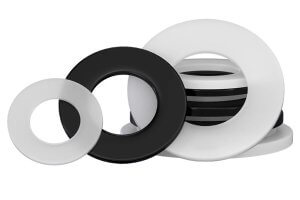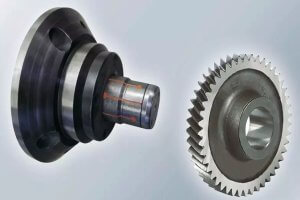CNC machining allows rapid prototyping to take advantage of the many benefits of computerized equipment. This allows you to quickly produce prototypes, engineering models, and high-quality parts for your end-use in a short time. These are the five top reasons CNC machining should be considered for your next rapid prototyping job.
1. CNC Machining is Fast
CNC machining was first used for mass production in the 1970s. As machines and software have improved, it is now one of the most efficient and reliable methods to create complex shapes in metal or rigid plastic.
CNC machining is not only fast in terms of set-up time but also processing time. First, modern CAD/CAM software can convert a three-dimensional piece into a G-Code cutting program, which can then be transferred to a multiaxis mill in just hours.
A good mill or lathe, once programmed, can turn a blank metal piece into a finished product in minutes.
2. CNC Machining Requires no Fixed Tooling
For some manufacturing processes, such as pressure die casting or plastic injection molding, rigid dies are required made from hardened or semi-hardened steel alloys. Depending on the complexity of these tools, they can take up to several weeks to make. Even vacuum casting can be time-consuming due to the use of silicone molds that can take several days to prepare. It is a worthwhile process for many projects, especially if you are trying to reproduce subtle textures from a master pattern. However, this can limit your options for other projects. CNC machining creates a flatter and smoother surface for engineered parts.
Only the spindles and hardened metal inserts are used for CNC turning and milling. Different types and shapes of cutting inserts can perform different cutting functions on the workpiece. However, if they are properly arranged on an automated turntable, these tools can be easily swapped and exchanged in seconds.
3. CNC Machining is Accurate
Computer-controlled cutting tools are the best way to achieve greater precision and accuracy in a modern machine shop. Tolerances as high as +0.05mm and 50 microns are common with this level of precision. This level of accuracy is sufficient for most commercial applications. This tolerance can be easily repeated over unlimited production runs.
Special cutting tools can be used to achieve tighter tolerances, as required by aerospace, automotive, or scientific applications.
4. Modifying CNC Machining is easy
Modifying a few lines in the G-code program is all it takes to modify a design quickly. This is particularly useful for prototyping as it allows you to quickly test different iterations, and then immediately evaluate the results. You can reduce product development time by tweaking a program and making adjustments on the fly, without incurring additional costs.
5. CNC Machining Works with Many Materials
CNC machines don’t care what material they cut, as long as it isn’t deformable or melts under the pressure of cutting. This is useful for product development and when you need to produce several identical prototypes with different mechanical or cosmetic properties. You can make the same design in either rigid plastic or aluminium, and only minor adjustments to the speed of the tool that is cutting.
CNC machining is a key part of our success. We at Want.Net have made millions of parts over the years and created rapid prototypes for our worldwide clients. Get a free quote by uploading your digital CAD files today!
Other Articles You Might Enjoy
- Why You Should Use Machining When Prototyping
Modern technologies have opened up new possibilities for prototyping. Because of its low cost and on-demand nature, 3D printing or so-called Additive Manufacturing is a popular option for rapid prototyping.…
- Revolutionizing Speed: Rapid Bead Blasting Techniques in China's Custom Machining Industry
Introduction: The Evolution of Custom Machining in China The story of custom machining in China is a remarkable narrative of transformation, mirroring the nation's broader journey from a primarily agrarian…
- Exploring Bead Blasting in CNC Machining(3d prototyping James)
Bead blasting is a surface treatment process extensively used within the field of Computer Numerical Control (CNC) machining, which has revolutionized manufacturing industries. This method comes under focus due to…






